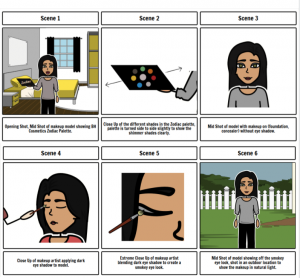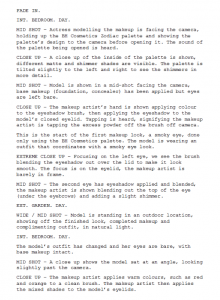BRIEF: TECHNOLOGY REVIEW VIDEO
Working in crews of 4, you will create a 4-5 minute video in which you review the Canon C100 digital cinema camera in comparison to the Canon 77D DSLR camera. The video is intended to help students understand the main differences between the 2 cameras as well as the benefits of progressing from the 77D to the C100. You must have at least 1 presenter on screen and use the supplied graphics as found on the week 12 moodle page. You can edit on either Avid or Premier, and it will be a group edit rather than individual edits. You can use materials shot on previous tasks and modules to showcase the differences in the images each camera can capture.
Reflective Essay:
The technology review video enquired working in crews of 4 and creating a 4-5 minute video in which we reviewed the Canon C100 digital cinema camera in comparison to the Canon 77D DSLR camera. The main intentions for this video was to help students understand the main difference between the 2 cameras as well as establishing the benefits of progressing from the 77D to the C100.
Although this artefact was a simple project it was proven to be a challenge due to been given the brief in the morning and expected to film there and then resulting in time been our crucial enemy. ‘Typical production problems reflects on lack of planning, and planning is the most important element for successful productions’ with this in mind and our tight schedule we decided to split roles with the group, two people set up the equipment, some researched existing review videos to understand what style was expected in a review video while others made a brief script for set.
A major concern for this artefact was that there was no other time for re-filming. Therefore we took into consideration that ‘the eye is superficial, the ear is profound and inventive’ (Bresson, 1977). With this in mind we did many test shots to ensure that sound was clear and that we was happy with the way the presenter was showcased. This was beneficial for postproduction as no problems were found with the footage.
The main aim for this artefact was to give the audience as much information as possible about the progression from the 77D to the C100 cameras. Therefore we decided to take the ‘less is more’ approach towards the video as we believed we could show a clear and detailed video without it been over complicated for the audience. This is established with the use of simple effective shots such as close-ups to show demonstrations.
‘It takes time to achieve perfection’ (Forsyth, 2013) with this statement in mind we decided that tie was no object when it came to postproduction especially as it was our enemy for preproduction.
Overall, from this artefact I established that I can work efficiently under pressure within a group in an effective way while creating a using video for other people’s use.
Bibliography
Bresson, R (1977) Notes on Cinematography. New York, Urizen books. Pg39.
Forsyth, P. (2013) Successful Time Manaagement. 3rd ed. UK, Kogan Page Publishers.




